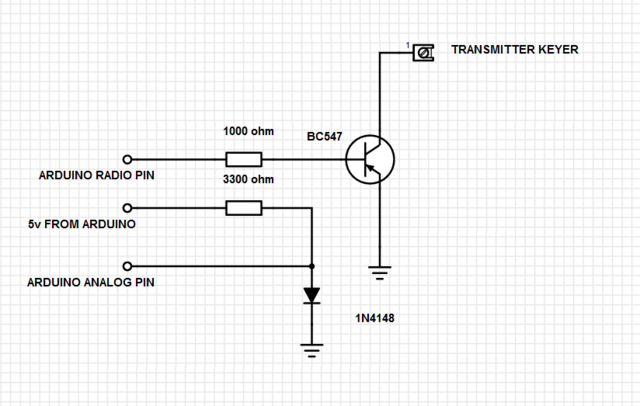I am testing out a beacon using Arduschreiber, using a 20W solarpanel. I got it running in the QRP spectrum of 40m, so i am going with 175mW of output to not cause any interference. There is no battery backup, so it will probably be running between 06.00 to 21.00 each day.
The beacon sends a short bit of text with some information, and the temperature, i am messuring it with a 1N4148, the forward voltage is about 0,6 volts depentent on temperature, about -2mV per degree celcius. With the internal adc refence of an arduino on 1,1v it works pretty well.
The transmitter is built into a watertight box, and all connections are sealed with melting glue.
Frequency: 7028.33kHz
Interval: 3 minutes
Mode: Slow-hell
Power: 175mW
Antenna: Simple longwire antenna, 5m with a couple of meters of ground wire.
Here is a short descreption of how i wired the Arduino to the keyer, and the temperature temperature sensor(diode).












 The code is now updated with the complete GL character set.
The code is now updated with the complete GL character set.
 I used hotglue to attach it, and it worked really well. I will post a couple of pictures soon!
I used hotglue to attach it, and it worked really well. I will post a couple of pictures soon!


